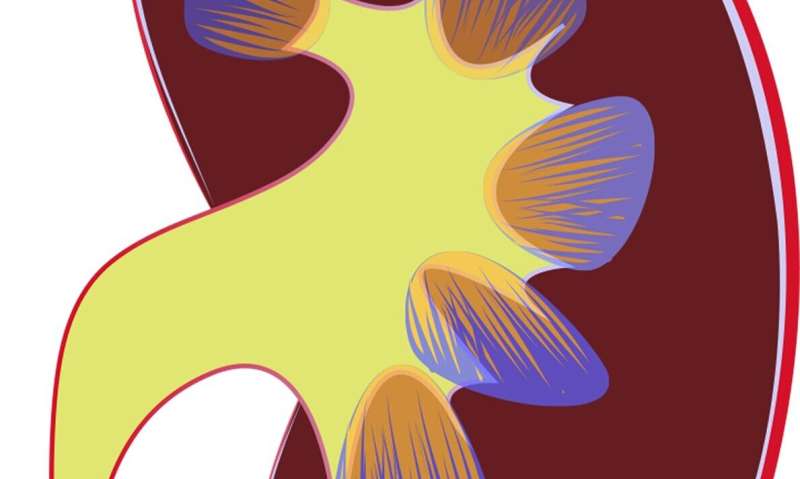
SGLT2 inhibitors (gliflozins) were developed as oral antidiabetics. They enhance urinary glucose excretion by inhibiting SGLT-2 (sodium-dependent glucose co-transporter-2) in the renal tubuli. The discovery of kidney benefits beyond the lowering of blood sugar has been made by Professor Christoph Wanner from Germany: The EMPA-REG OUTCOME study initially showed that the rate of cardiovascular events in type 2 diabetic pa-tients is significantly reduced if the SGLT2 inhibitor empagliflozin is administered. Kidney function in diabetics who already had diabetic nephropathy was also found to benefit sig-nificantly from the treatment (as an incidental finding, so to speak). In other cardio-vascular outcome studies, this effect has been confirmed for other SGLT2 inhibitors in type 2 diabetics with diabetic nephropathy (albuminuria). The DAPA-CKD study showed that, even in non-diabetic CKD patients, i.e., in patients with other under-lying causes of kidney disease, the combined renal endpoint (loss of renal function ~50%, dialysis requirement or mortality) is significantly delayed by SGLT2 inhibition with dapagliflozin (HR 0.61).
The mechanisms by which SGLT2 inhibitors produce their renoprotective effect are still largely unknown. A post-hoc analysis using data from the EMPA-REG OUTCOME study looked for possible factors that could mediate or be correlated with this effect. The pooled treatment group (empagliflozin 10 and 25 mg/d) was compared with the placebo group. A total of 17 different potential factors from different physiological areas were reg-istered at the start of the study and statistically evaluated on a time-dependent basis (Cox regression with time-dependent covariates) and also at the time of week 12 (orien-tation point analysis). The variables were incrementally summed according to the strength of their effect on the composite renal endpoint.
In time-dependent analysis, the unadjusted EMPA effect on the renal endpoint was HR 0.56 (probability or risk reduction, i.e., treatment was 44% less likely to reach the renal endpoint).
In more advanced CKD stages, the kidneys no longer produce sufficient amounts of the blood-forming hormone erythropoietin, thus resulting in renal anemia (as indicated by lowered hematocrit levels). After adjusting the hematocrit (HK) value over time, the HR for the EMPA effect was 1.0; the HK value was therefore the strongest mediator. Other factors were serum uric acid concentration (33.2%) and albuminuria (31%). At week 12, the unadjusted HR for the treatment effect on the renal endpoint was 0.54. Once again, HK was the strongest mediator of the EMPA effect. After adjusting for the HK value, the HR was 0.69—from which a mediation effect of 40.7% was calculated. Other factors were HbA1c (28.3%), blood pressure (16.8%) and fatty acid levels (16.5%). The compo-site effect of HK, HbA1c, blood pressure and fatty acid levels was 78.9%.
“We know that severe anemia is a predictor not only for CKD progression, but also for cardiovascular events,” explains Prof. Dr. Christoph Wanner. “According to the new study data, hematocrit is the most important mediator of the positive gliflozin effects, i.e., the main mechanism by which the SGLT2 inhibitors stabilize renal function and improve the clinical outcome correlates with the percentage increase in erythrocytes. These correla-tions now need to be investigated further—for example, to determine whether a role is played here by hemoconcentration due to increased urinary excretion induced by gliflozin, or by enhanced erythrocyte production.”
Source: Read Full Article